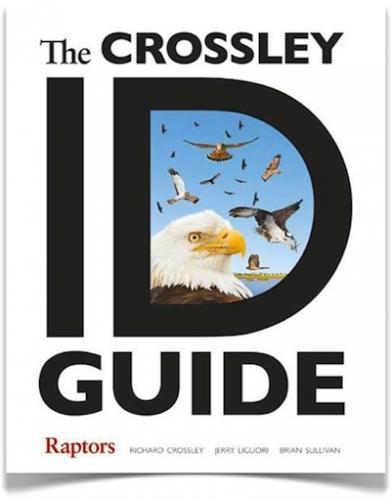A few months back we talked about the hawk watch at Acadia National Park. I mentioned a few books that are useful for the enterprising raptor enthusiast.
At the time I was also aware that a new raptor identification aid was on the way, but I kept that little secret to myself. The proverbial cat is out of the bag now, and I’ve spent the last couple weeks devouring The Crossley ID Guide: Raptors.
First, a little history is in order. Two springs ago, Richard Crossley, a British birder transplanted to Cape May, New Jersey, thrust The Crossley ID Guide: Eastern Birds onto the birding community. Field guide aficionados, normally a rather sanguine crowd, were abuzz for months about the innovative approach Crossley presented.
We’d gotten a glimpse of it in 2006 with The Shorebird Guide, co-written by Crossley, Kevin Karlson, and Michael O’Brien. There were photographs of shorebirds in their natural habitat - not all of them at a good angle or in the best lighting. Some photos had birds other than the species being discussed. It certainly wasn’t the old Peterson-style field guide.
The Crossley ID Guide went further. Birds from every angle were photo-shopped onto full-page habitat photos. The effect was jarring, and that’s precisely what Crossley had in mind.
“I’ve always thought we can do better,” Crossley says about the old Peterson style. “Some people have spent their whole life looking at a sideways bird on a white piece of paper with an arrow pointing at one of the bird’s features.”
To say that he revolutionized the field guide would be a bit premature, but he certainly threw down a gauntlet to those of us that have been married to the idea of a bird in profile, field marks accentuated against a white background.
I liked the original Crossley guide, and it’s become a valued cog in the machine that is my bird identification process. I haven’t given up my Sibley Guide, nor unseated it from its position as my go-to guide, but I’ve incorporated Crossley’s book into my study and trip preparation.
And now, along comes The Crossley ID Guide: Raptors. I need help with raptors. Any birder that claims to not need help with raptors is probably misidentifying a lot of hawks. Perhaps I didn’t pay enough attention to the raptors in the eastern bird guide, but it wasn’t until I opened this book that I truly realized how inadequate a traditional field guide method is for identifying hawks.
You simply do not see these birds perched perfectly or showing their underwing pattern just right while flying above. It’s difficult to even get a bead on general size and shape sometimes.
Hawks of the Buteo group often do perch nicely, actually, but it is always when you are going down the interstate at 75 mph. Ferruginous or Swainson’s Hawk? Red-tailed? By the time you pull the field guide out of the glove compartment, the bird is two miles behind you and you’ve nearly caused a 14-vehicle accident.
With this book, you see the birds as you see them in the field. It’s a book best perused while not birding. Spend some time immersed in the stunning double-page color plates. You’ll begin to get a feel for what you need to look for. It’s like training to be a pilot in a flight simulator. You’re training to be a better raptor-watcher in the pages of a book.
Plates cover each species, aging patterns within the species, and comparisons with similar birds. Double-page quiz plates show a bunch of raptors, often in the same confounding situations in which you find them in field, with your task being to identify, age and sex them all. They say the best way to become a better birder is to go birding. Well, the next best thing to birding is studying a Crossley plate.
With the scope of this guide being so much smaller than that covering all eastern birds, the species accounts can be much more detailed. Each account begins with a story from the field. Crossley asked his writers to “be the bird” in these write-ups, and it works. You can feel the bird and truly know the bird after just a few paragraphs.
I can’t decide if the magnificent natural history and technical identification tips of the text is my favorite part of the book, or if the jaw-dropping plates continue to take the prize. Thankfully, you need not decide, as you get it all in one book.
As much as I’ve been anticipating spring migration, holding The Crossley ID Guide: Raptors in my hands is making me long for the autumn hawk watches. Considering how much I dislike winter and how much I’m often frustrated by hawk identification, that’s the highest praise a book can get from me.


 Support Essential Coverage of Essential Places
Support Essential Coverage of Essential Places







Comments
Thanks for the review. I will have to buy another guide.
I just posted a link to our birding club.